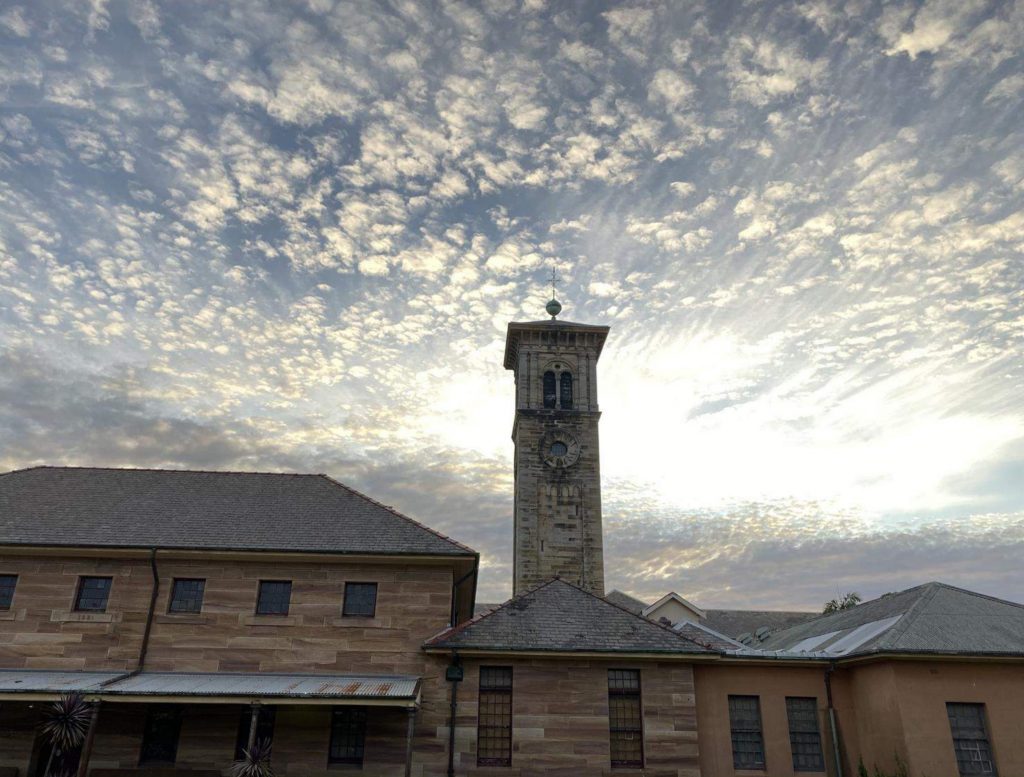So what’s not to like?
Rob Stokes, the Minister for Planning, has announced that the first stage of the Landscape Structure Plan will focus on the foreshore areas of Callan Park. (See here for the final LSP.)
This is in line with what the community and Friends of Callan Park have recommended.
The upgrade will go ahead later this year at a cost of $14 million – a significant increase on the $10 million originally promised.
All this is an historic and welcome breakthrough, ending the decades-long refusal by state governments to fund works at Callan Park – the notorious demolition by neglect.
As the minister said, “This only starts the journey – it doesn’t finish it by any stretch of the imagination. But it is the biggest single investment in Callan Park for generations.”
His announcement was made at Callan Park in the company of our local MP Jamie Parker and the president of the local soccer club. The absence of anybody from the new Greater Sydney Parklands agency that is now notionally the manager of Callan Park, was conspicuous.
This first stage upgrade will basically complete the Bay Run along the Callan Park foreshore, end car traffic on the foreshore, shift foreshore parking to Wharf Road, demolish the post-war veterans wards and landscape that area, and renovate the building overlooking the Waterfront Oval into a facility for sporting clubs and community groups.
In addition, NSW Health, which is the official owner of this former psychiatric hospital site, is preparing plans for works to protect and renovate of the Kirkbride block – the 19th century sandstone complex that housed the original asylum. The cost of these works will be in addition to the promised $14 million.
A companion animals management plan for the site in response to concerns from dog owners is also promised for later this year.
What’s next
All the building and landscape plans will be submitted to Inner West Council in March for exhibition, public and staff comment, and detailed approval by the Heritage Council and elected Councillors.
All this is tremendous progress and deserves celebration. It comes on top of the government’s decision to increase annual maintenance funding for the parklands from $1,5 million to $2.5 million.
It would seem churlish to raise concerns at a time of such unalloyed progress. But there are certain crucial issues which will not go away. Three stand out – future funding, site management and mental health initiatives.
The first is the funding for stages 2-4 of the Landscape Structure Plan. This is a state government that has been wedded to the notion that parks should pay for themselves – which could mean that it will try to commercialise or privatise parts of Callan Park.
The fact that this current good news about Callan Park has been announced by the minister rather than by Greater Sydney Parklands, the ‘super parks agency’ he has established to run Sydney’s iconic parklands, raises the concern that good news will come from the minister while any ‘bad news’ will be left to the agency.
Many locals are wary of this new agency as a remote and unrepresentative bureaucracy. It is the reason that at the announcement Jamie Parker raised the community’s preference for a specific, community-based Callan Park Trust to manage the site.
The establishment of such a Trust would help remove any lingering suspicions about the government’s intentions. Such a Trust would also cement in place the current sympathetic and consultative onsite management that Callan Park now enjoys.
The third issue that needs addressing is what is to happen to the many fine buildings on the site that will now not be demolished. Some of those buildings were constructed as cottage-type mental health wards in the 1990s.
It has long been the position of the Friends of Callan Park and many residents that Callan Park should be home to additional modern, mental health services. Two years ago it appeared that the Sydney area management of NSW Health agreed. There was a proposal floated to establish a step-down facility at Callan Park for people leaving psychiatric hospital care.
Sadly that proposal came to nothing.
Given the continuing crisis in mental health provision, the continued refusal to take more advantage of the availability of Callan Park for community-supported mental health services appears to be an outmoded prejudice.
Now that the generation-long ‘demolition by neglect’ has ended at Callan Park, it seems an opportune moment to review the taboo on mental health initiatives. A change there would really be something else to celebrate.
